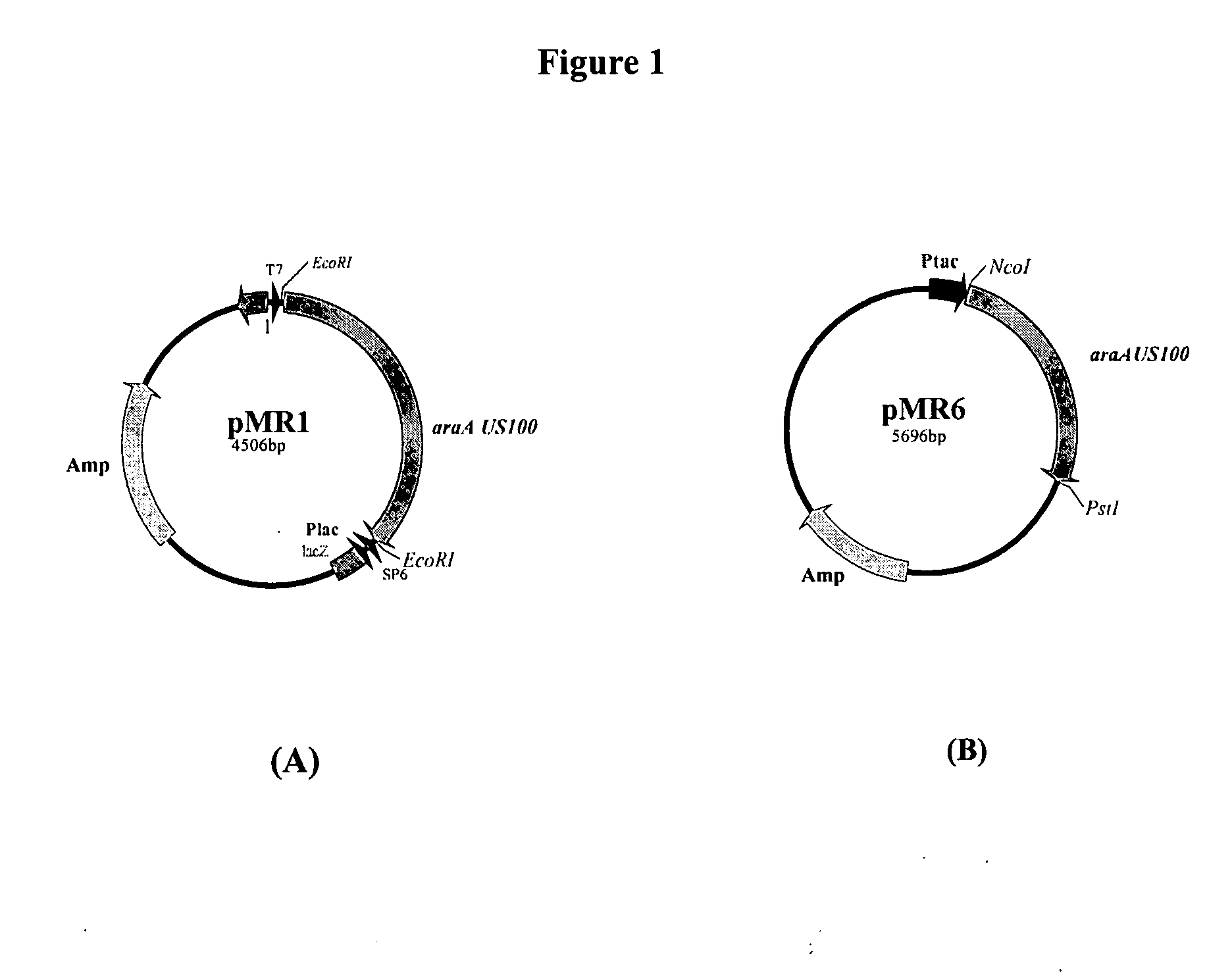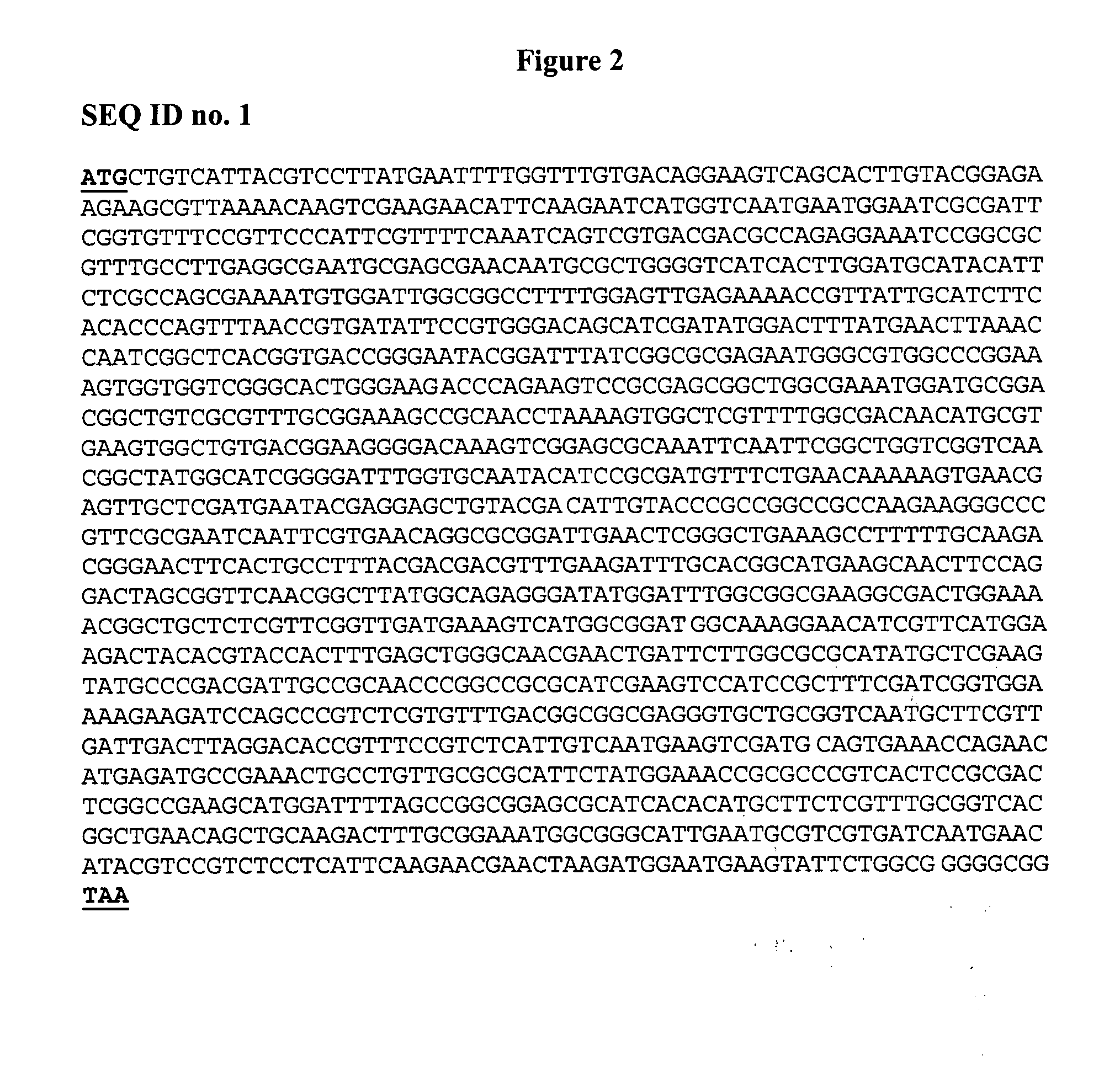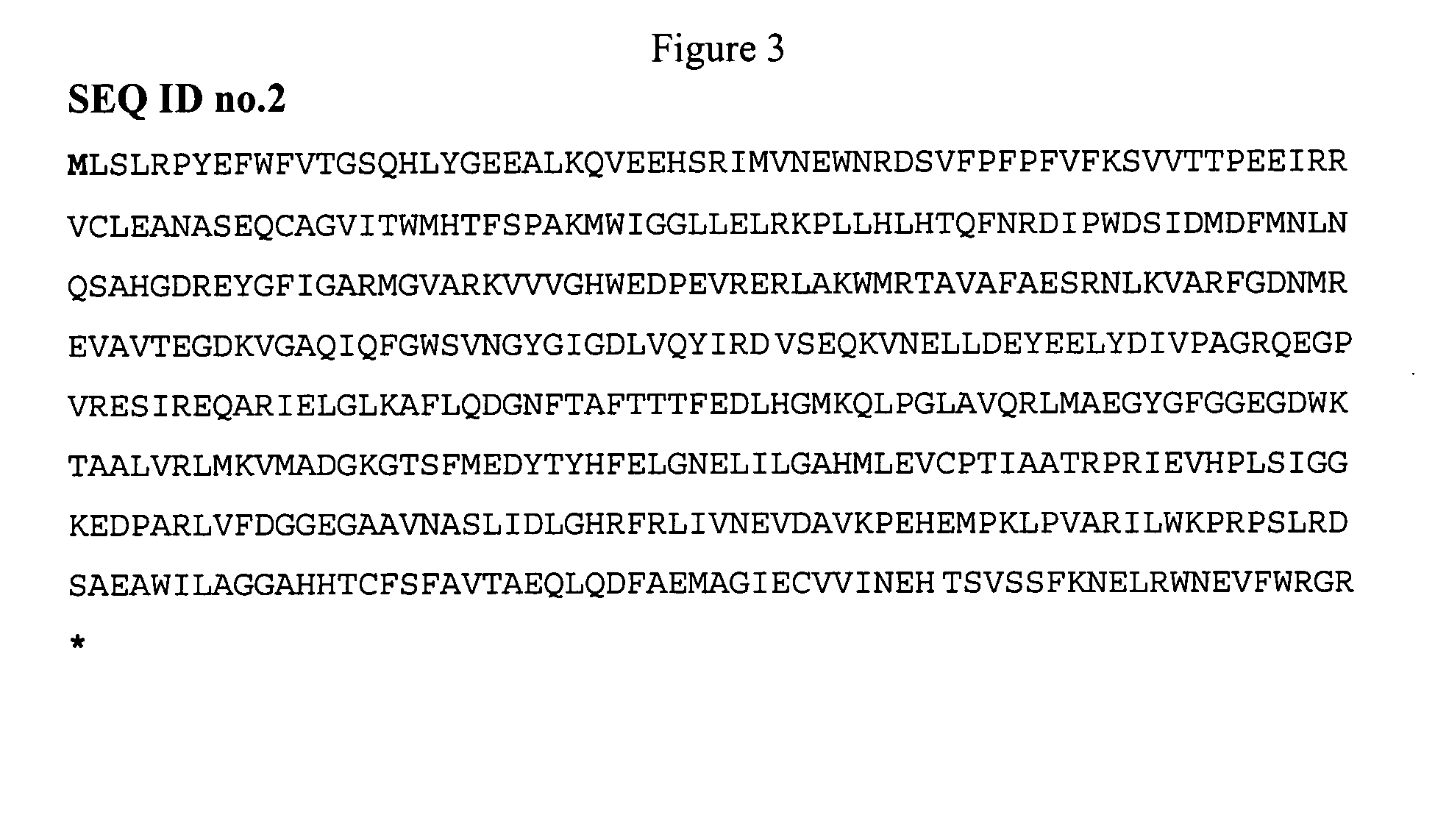Polypeptides Having L-Arabinose Isomerase Activity Exhibiting Minimum Dependence on Metal Ions for Its Activity and for Thermostability and Nucleic Acids Encoding the Same
a technology of isomerase and polypeptide, which is applied in the field of larabinose isomerase production and exploitation, can solve the problems of increasing process cost effectiveness and limited production of this sugar at industrial scal
- Summary
- Abstract
- Description
- Claims
- Application Information
AI Technical Summary
Benefits of technology
Problems solved by technology
Method used
Image
Examples
example 1
Identification of Nucleotide Sequence of the L-arabinose Isomerase of Bacillus stearothermophilus (Strain US100) and its Heterologous Expressin in E. coli
[0030]In this example, are given data for indication and not for restriction, the identification of the nucleotide sequence of the L-arabinose isomerase of Bacillus stearothermophilus (strain US100) and its heterologous expression in E. coli.
[0031]The thermophile strain Bacillus stearothermophilus (strain US100) was grown in the appropriate medium at 55° C. The culture was used for the preparation of genomic DNA. Based on the sequence of the Bacillus setearothermophilus T6 arabinose operon (accession number: AAD45178) previously reported in the Genebank, we conceived two oligonucleotides: O1 5′GTGAACGGGGAGGAGCAATG3′ and O2 5′GAAATCTTACCGCCCCCGCC3′ in order to amplify the araA US 100 gene encoding the L-arabinose isomerase of Bacillus stearothermophilus (strain US 100).
[0032]A PCR fragment of approximately 1.5 kb was obtained usin...
example 2
Sequencing of the araA US100 Gene and Analysis of the Corresponding aa Sequence
[0034]In this example the polynucleotide sequence determination, encoding the L-AI US100 activity and analysis of the corresponding aa sequence; is given for indication and not for restriction.
[0035]Using the pMR1 plasmid we have determined the polynucleotide (ara AUS100 gene) encoding the LAI US100 activity). The analysis of this sequence revealed the presence of a single Open Reading Frame of 1491 pb started with an ATG and ended with the TAA end codon (FIG. 2). The aa sequence deduced from the nucleotide sequence showed that L-AI US100 composed of 496 aa (FIG. 3). The analysis of this sequence reveals a high identities with those of other L-AIs attaining 98% (Table 1). In fact, the L-AI US100 have only 8 and 11 aa different from L-AIs derived from Thermus sp (accession number: AAO72082) and B. stearothermophilus T6 (accession number: AAD45718) respectively.
example 3
Over-Expression and Purification of the L-AI US100
[0036]In this example, are given a data for indication and not for restriction the over-expression and purification of the L-AI US100
[0037]To over-express the L-AI US100, the corresponding gene was placed downstream of Ptac promoter of the ptrc99a vector generating the pMR6 plasmid (FIG. 1B). The determination of the L-AI US100 activities of the ER2566 / pMR1 and HB101 / pMR6 strains showed specific activities of 38.6 and 51 U / mg respectively. Hence, the efficient L-AI US100 expression was obtained with the Ptac-araA US100 construction (pMR6), which was retained for the L-AI US100 purification.
[0038]The enzyme was purified from the crude cell extract of an overnight HB101 / pMR6 liquid culture. Taking advantage of the L-AI US100 thermostability, a heat treatment step in the presence of 0.2 mM Co2+ and 1 mM Mn2+ during 30 min at 70° C. followed by centrifugation (25000 rpm, 30 min), was introduced. This step removed the majority of thermola...
PUM
| Property | Measurement | Unit |
|---|---|---|
| temperature | aaaaa | aaaaa |
| temperature | aaaaa | aaaaa |
| optimal temperature | aaaaa | aaaaa |
Abstract
Description
Claims
Application Information
 Login to View More
Login to View More - R&D
- Intellectual Property
- Life Sciences
- Materials
- Tech Scout
- Unparalleled Data Quality
- Higher Quality Content
- 60% Fewer Hallucinations
Browse by: Latest US Patents, China's latest patents, Technical Efficacy Thesaurus, Application Domain, Technology Topic, Popular Technical Reports.
© 2025 PatSnap. All rights reserved.Legal|Privacy policy|Modern Slavery Act Transparency Statement|Sitemap|About US| Contact US: help@patsnap.com



